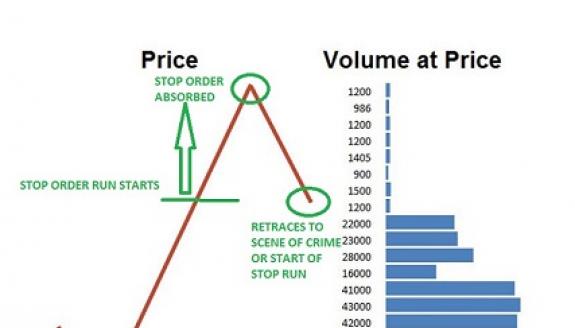
Backwardation is when one thing's price falls in the future relative it its current price. Commodities serve as raw materials and inputs for other products and services. An investor can suffer a loss if the price of commodities falls too far into the future. This condition is known to be the "Contango Effect."
Contango
A situation in which futures and spot price of a commodity are convergent is called contango. If the futures prices are higher than the spot, then the futures contract has entered a backwardation status. This is when the demand for the futures contracts outweighs its supply. This causes futures and spot prices to rise over time. The result is that a contract purchased at $75 will eventually turn into $70.

Backwardation is not preferred by traders. Backwardation is when the spot or futures prices are higher than the spot. Backwardation is when the spot price rises and traders can make a profit. However, if futures prices are below the anticipated price, traders may think that the demand for the commodity is less than expected. This is a risky position for traders, so it's best to stick with the trend.
Although the term "contango," is used for options and futures, it can also be applied to commodity futures or leveraged exchange-traded fund (ETFs). The opposite management mantra may be the case with exchange-traded funds, as they follow the opposite management mantra. It is natural to wonder why someone would choose to invest in an ETF with a different management mantra. However, it is a common practice in futures and options markets.
Traders looking for a long-term investment opportunity should consider the potential risk of the market's movement in the direction of the forward contract price. If the market moves towards a futures price, then the price of the futures contracts will fall. It will typically equal the maturity spot value of the underlying. But, the market is at risk of falling. The price graph is a good way to determine if the commodity is in a reversed situation.

Laddering is another strategy many traders use for managing their risk. Laddering is one way to hedge futures contracts. In this strategy, one sells the most expensive contracts while buying the cheapest contracts. Traders are able to minimize their losses in contango, while also reducing the risk of backwardation. It's better than to be unsafe than sorry. As well as laddering, it is a good idea to be cautious with commodity and leveraged ETFs.
FAQ
How are securities traded
The stock market allows investors to buy shares of companies and receive money. Shares are issued by companies to raise capital and sold to investors. Investors can then sell these shares back at the company if they feel the company is worth something.
Supply and demand determine the price stocks trade on open markets. If there are fewer buyers than vendors, the price will rise. However, if sellers are more numerous than buyers, the prices will drop.
There are two methods to trade stocks.
-
Directly from the company
-
Through a broker
Is stock a security that can be traded?
Stock can be used to invest in company shares. This is done through a brokerage that sells stocks and bonds.
You could also invest directly in individual stocks or even mutual funds. In fact, there are more than 50,000 mutual fund options out there.
There is one major difference between the two: how you make money. Direct investment earns you income from dividends that are paid by the company. Stock trading trades stocks and bonds to make a profit.
Both of these cases are a purchase of ownership in a business. You become a shareholder when you purchase a share of a company and you receive dividends based upon how much it earns.
With stock trading, you can either short-sell (borrow) a share of stock and hope its price drops below your cost, or you can go long-term and hold onto the shares hoping the value increases.
There are three types of stock trades: call, put, and exchange-traded funds. Call and put options give you the right to buy or sell a particular stock at a set price within a specified time period. Exchange-traded funds are similar to mutual funds except that instead of owning individual securities, ETFs track a basket of stocks.
Stock trading is very popular because investors can participate in the growth of a business without having to manage daily operations.
Stock trading can be a difficult job that requires extensive planning and study. However, it can bring you great returns if done well. If you decide to pursue this career path, you'll need to learn the basics of finance, accounting, and economics.
What role does the Securities and Exchange Commission play?
Securities exchanges, broker-dealers and investment companies are all regulated by the SEC. It also enforces federal securities laws.
Statistics
- Individuals with very limited financial experience are either terrified by horror stories of average investors losing 50% of their portfolio value or are beguiled by "hot tips" that bear the promise of huge rewards but seldom pay off. (investopedia.com)
- The S&P 500 has grown about 10.5% per year since its establishment in the 1920s. (investopedia.com)
- For instance, an individual or entity that owns 100,000 shares of a company with one million outstanding shares would have a 10% ownership stake. (investopedia.com)
- US resident who opens a new IBKR Pro individual or joint account receives a 0.25% rate reduction on margin loans. (nerdwallet.com)
External Links
How To
How to make a trading program
A trading plan helps you manage your money effectively. It helps you understand your financial situation and goals.
Before setting up a trading plan, you should consider what you want to achieve. You might want to save money, earn income, or spend less. You might want to invest your money in shares and bonds if it's saving you money. If you are earning interest, you might put some in a savings or buy a property. You might also want to save money by going on vacation or buying yourself something nice.
Once you know your financial goals, you will need to figure out how much you can afford to start. This will depend on where and how much you have to start with. You also need to consider how much you earn every month (or week). Your income is the amount you earn after taxes.
Next, make sure you have enough cash to cover your expenses. These include rent, bills, food, travel expenses, and everything else that you might need to pay. These expenses add up to your monthly total.
Finally, you'll need to figure out how much you have left over at the end of the month. This is your net income.
You're now able to determine how to spend your money the most efficiently.
To get started with a basic trading strategy, you can download one from the Internet. You could also ask someone who is familiar with investing to guide you in building one.
Here's an example.
This displays all your income and expenditures up to now. You will notice that this includes your current balance in the bank and your investment portfolio.
Here's an additional example. This one was designed by a financial planner.
It will allow you to calculate the risk that you are able to afford.
Don't attempt to predict the past. Instead, you should be focusing on how to use your money today.